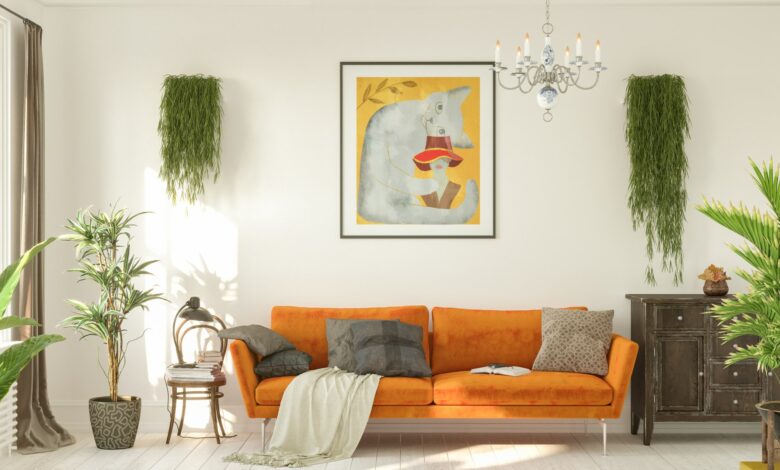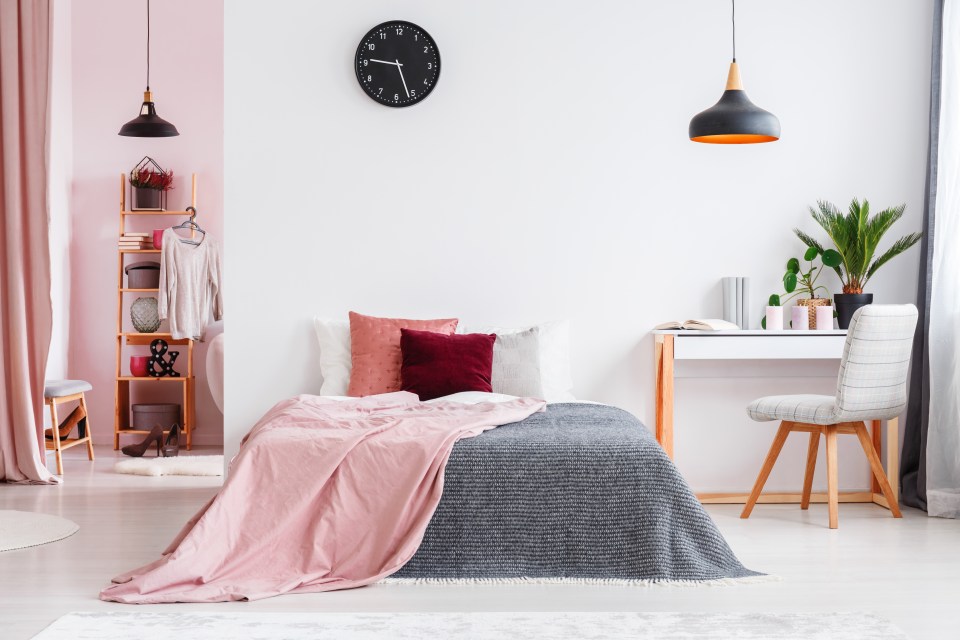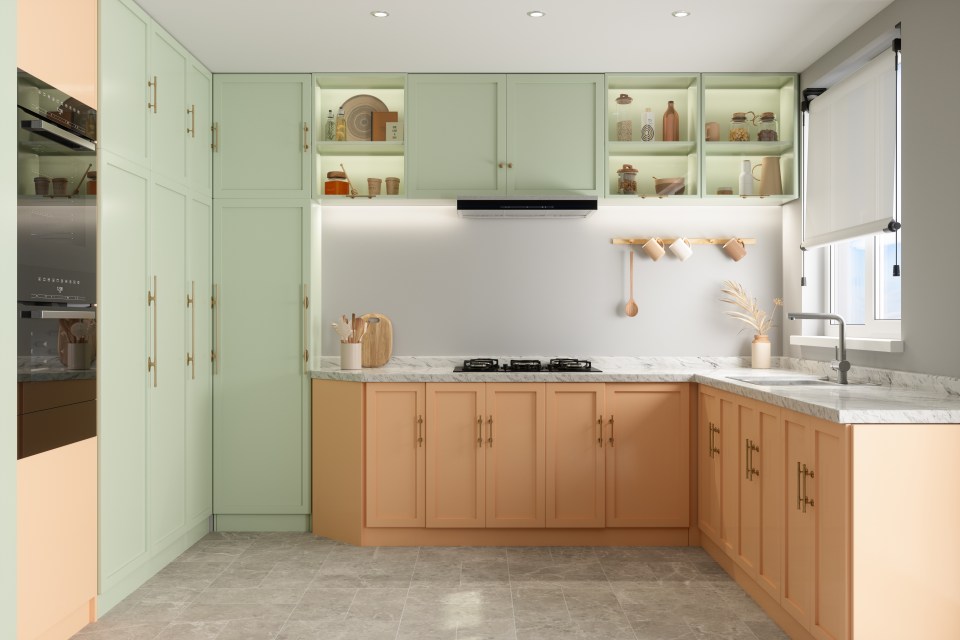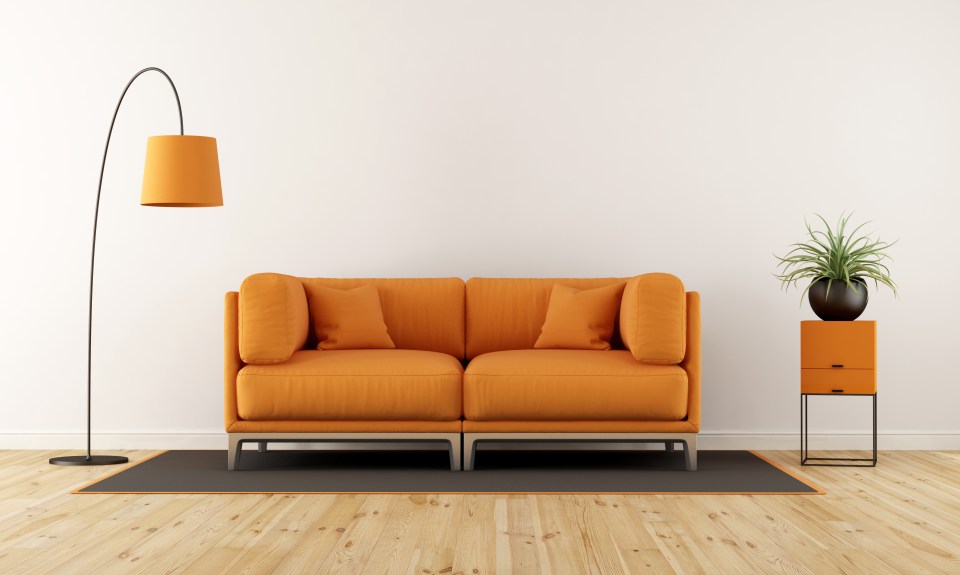I’m an interior designer and these are the trends for 2024 – it’s all about color






INTERIOR experts have revealed the popular trends expected to hit our homes as we head towards the end of 2024 – and it’s all about colour.
For years, gray and white or soft, soothing browns and creams were the most common colors in our homes.
But now it looks like color is making a comeback, according to design experts who believe it’s time to infuse our spaces with bold hues.
Research from Next found that 84 percent of homeowners want to add more color, while 70 percent admit they are stuck with their current aesthetic.
Luckily, interior designer Lucy Tiffney, a finalist in The Great Interior Design Challenge, has revealed which shades are currently on trend.
She said: “Different colours can evoke different emotions, so choosing a colour that makes you feel calm or happy is a good start.
“When looking for trendy shades, think bold colors: green, hot pink and orange are all very popular shades this year.”
The artist also shared her top tips on how to add pops of color to your home without it becoming overwhelming.
Living room
According to Lucy, the living room is one of the most important rooms in the home and the perfect place to add a pop of colour.
She explains: “An added benefit of adding colour to this room is that you can start as boldly or subtly as you like. There are generally more accessories and larger pieces of furniture in this room than in any other room in the house to break up the colour accents.
An example of this is placing a colorful ornament or a vase as an eye-catcher on a black sideboard.
You can balance this with other black, metallic or neutral accessories to start and gradually add more colour to the scheme.
If you’re feeling a little bolder, consider adding a larger piece of furniture in a bold color, such as a mustard or pink ottoman to contrast the brown or cream sofa.
“If you know you want to create a colorful living room, but don’t know where to start, finding one base color to associate the room with can be as simple as finding one base color.
A great way to find complementary colors is to use a color chart.
“Normally, all colors in the same vertical line are monochromatic matches and all horizontal colors are complementary hues.”
Bedroom
The bedroom should be one of the most relaxing spaces in our home, so Lucy recommends choosing colours like blue, green or pink that match the mood.
She says: “Be careful when adding colour to the bedroom, as this is a space that should remain calm and exude relaxation.
“That’s why I would avoid overstimulating, bright colours like red. If you want to make a statement, you can opt for a bed frame in a striking colour like blue, green or pink – and then pair the colour with neutral-coloured bedding and a matching bedspread or cushion.
“Adding colour and texture through patterned throws or cushions in the bedroom is also a fun way to add interest, and is easy to adapt to different times of the year.
“By choosing prints with a few colors, like florals or stripes, you can add detail and bring the different colors back into other parts of the room.”
Kitchen
As the saying goes, the kitchen is the heart of the home, so it is important to choose the right colors.
While it may seem safer to opt for neutral colours such as beige, grey or white, this can quickly become dated. So think about how you can add a touch of colour.
Lucy suggests: “When you’re starting from scratch, choosing the colour of your cupboard doors is a really important decision.
Consider the amount of natural light in the room, especially when choosing between dark and light colors.
“Another great way to add pops of colour to your kitchen is through your cookware or tableware. We’re seeing more and more people using oven dishes, plates or cutlery holders as accessories in their kitchen, which is a great way to make the space feel lived in and homely.”
“If you want to keep the base of the kitchen relatively neutral, you can add colour through soft furnishings. Bold and bright patterns are very popular at the moment and go well with neutral tones.
“For example, if you have an armchair or sofa in your kitchen, consider opting for cushions or throws in bright floral patterns to add interest to the space and play with the use of colour.”
“A striking blackout curtain, a kettle or coffee maker also work well.”
Bathroom
Lucy says that green and orange are trendy colours in the bathroom.
She said: “In general, people are a little more adventurous with colour when it comes to decorating a bathroom.
“If you’re lucky enough to have lots of natural light, the bathroom is also a great space to experiment with color.
“Green and orange are trendy colors for bathrooms, but you don’t necessarily have to change your paint color to incorporate them.”
“Most bathrooms feature textiles in some form or another. Think of towels hanging over the radiator to dry, a brightly colored bath mat, or a nice piece of art. This is a quick and easy way to transform your room if you are careful about adding color.
“If you choose to paint just the woodwork, you can add a touch of personality in a way that is usually small, without using too much color.
“Try painting the frame, windowsill and skirting boards and see what effect it has.
“Another really easy way to add colour to a bathroom is by using plants. This is a natural, but also temporary way to add greenery to the room.”
7 Design Choices That Help Prevent Stress
While some people choose to decorate their homes in a classic and timeless style, others prefer something more eccentric.
But no matter what choices you make, what many don’t realize is that the design of your home can actually impact your mental health. Here are seven design choices to help you avoid stress.
- Add some floral flair – Not only do they create a soothing environment, but houseplants also act as natural air filters, reducing allergens and improving air quality.
- Enjoy your favorite aromas – the scents in your home can have a big impact on your stress level. So try scents that have to do with nature, flowers or good memories.
- Let the sunlight in – By making optimal use of natural light in your home, you improve your sleep patterns, motivation, mood and happiness.
- Embrace calming colours – choose softer colours in the rooms where you want to relax.
- Create a memory corner – filling your home with memories makes you happy and cozy and puts a smile on your face.
- Invest in your sleep – Investing in things that help you sleep well is one way to reduce your stress levels, such as buying blackout curtains or cotton bedding.
- Organize everything – A messy home is a stressful home. Organizing your home can do wonders for your mental health.









